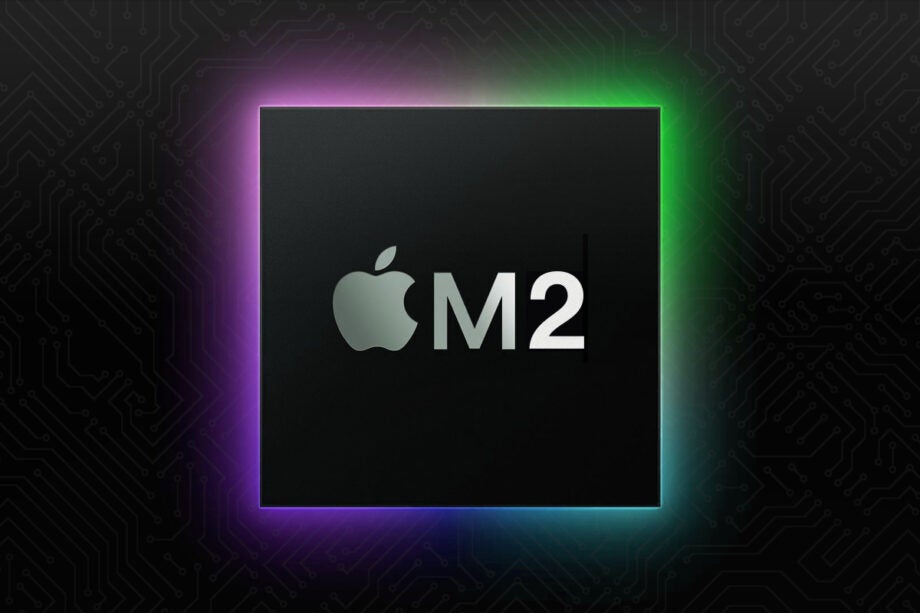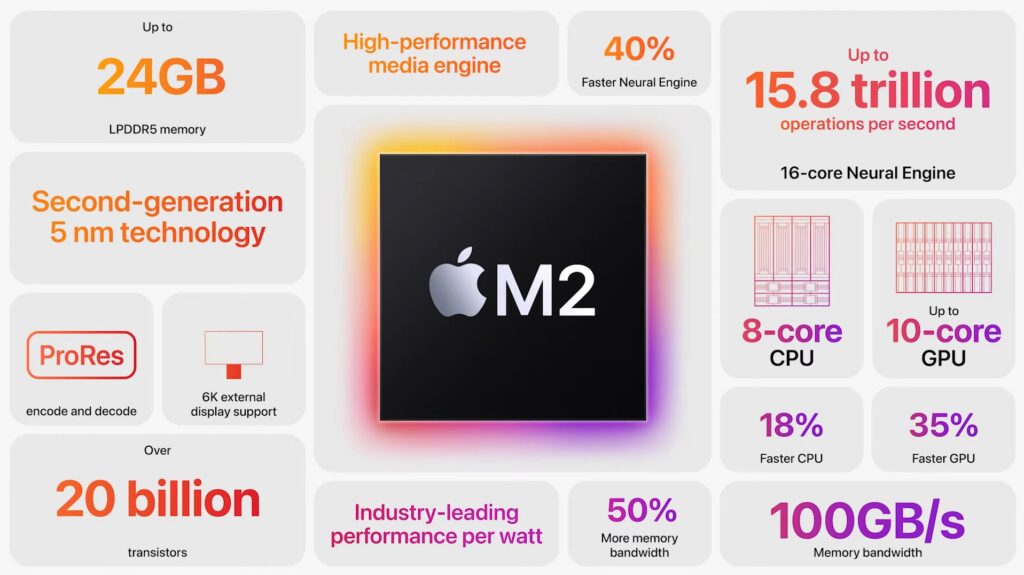Apple M2 chip: Everything you need to know

The Apple M2 is the latest processor designed for Macs, and marks a second generation for Apple Silicon processors.
The M2 chip is built upon the new second-generation 5nm architecture, with Apple claiming it offers an 18% CPU performance increase on the existing M1 processor.
But just because this is Apple’s latest chip for Macs, it doesn’t mean it’s the most powerful. Just like the M1 chip, the M2 is designed for entry-level devices such as the MacBook Air and 13-inch MacBook Pro.
And with an 8-core CPU, the M2 chip isn’t as powerful as the likes of the M1 Pro and M1 Max, which are found in the 14-inch an 16-inch MacBook Pro laptops.
Keep reading on for everything you need to know about the new M2 chip.
Release date
The Apple M2 chip debuted inside both the MacBook Air and 13-inch MacBook Pro, both of which launched in Summer 2022.
Price
At launch, the cheapest device with the M2 will be the MacBook Air at $1199/£1249 – and at that price, you only get an 8-core GPU. You’ll need to pay an extra £100 if you want the 10-core GPU.
For comparison, the M1-powered MacBook Air is still available for $999/£999, and is so a few hundred quid cheaper.
The M2 chip will also be available inside the new 13-inch MacBook Pro with a starting price of $1299/£1349.
Specs
The new Apple M2 chip is built upon the second-generation 5nm architecture. Despite using a similar 5nm node as the M1 architecture, Apple has still been able to fit 20 billion transistors on the processor – that’s 4 billion more transistors than the previous Apple M1 chip.
A larger number of transistors generally results in a faster performance. This enables Apple to offer a speedier performance without having to squeeze more cores onto the processor.
As a result, the M2 processor has the same 8-CPU core count as the M1, comprised of 4 performance cores and 4 enhanced efficiency cores.

Apple has decided to give the integrated GPU a notable performance boost though, adding an additional 2 GPU cores to take the total count up to 10. This makes the M2 a more powerful option for graphics-intensive workloads such as video editing.
The M2 chip will also feature 100GB/S memory bandwidth and up to 24GB of LPDDR5 memory.
Performance
We’re in the process of testing the new MacBook Air, but haven’t been able to conduct any benchmark tests just yet. But Apple has provided its own performance results, although it’s worth taking everything with a pinch of salt for now.
Apple claims the M2 provides an 18% CPU performance boost compared to the M1 processor. This means the M2 isn’t as fast as the M1 Pro (which is supposedly 70% faster than the standard M1) but that’s no surprise considering the M1 Pro is available inside more expensive hardware.
Thanks to the extra GPU cores, Apple suggests the M2 has seen a 35% graphics performance boost compared to the M2 chip. That’s an impressive improvement, but is dwarfed by the more expensive M1 Pro GPU which is apparently 200% speedier than the M1
So overall, you’ll be getting a more powerful performance than the M1 chip, but you’ll need to wait for the upcoming M2 Pro chip if you want a high-end performance that can speed through 3D modelling and video editing.


